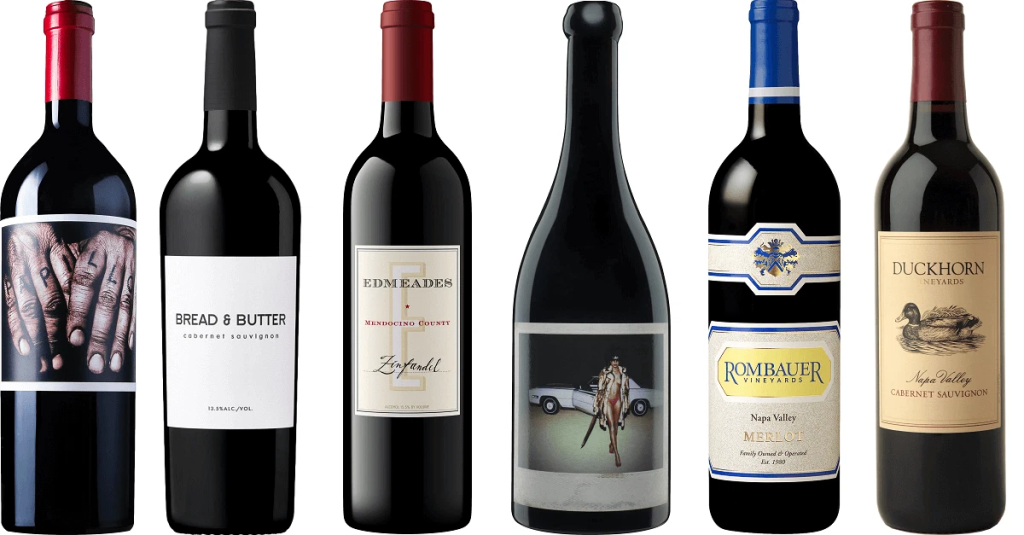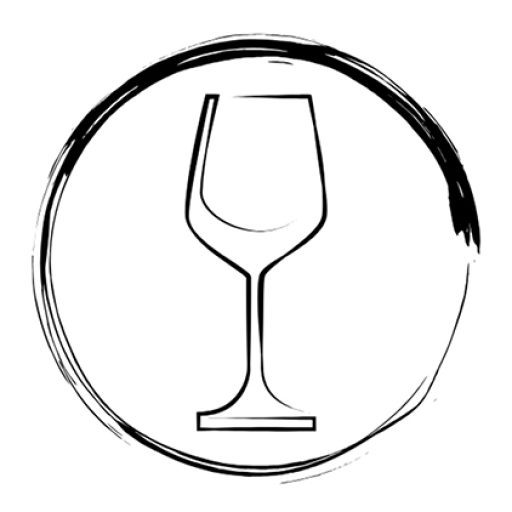Journey Through the World’s Popular Wine Regions
Wine Regions popular wine regions of the world, UNESCO wine landscapes, vineyard tours, wine country travel, wine terroir, wine tourismWine, with its rich history spanning thousands of years, has become an integral part of human culture, cuisine, and social tradition. The unique interplay between geography, climate, soil composition, and human expertise creates distinctive wines that capture the essence of their origins—a concept the French call “terroir.” This comprehensive journey explores the world’s most celebrated wine regions, examining their historical significance, signature grape varieties, iconic producers, and the cultural experiences they offer to visitors. From the rolling hills of Bordeaux to the sun-drenched valleys of Napa, these regions represent not just agricultural areas, but living cultural landscapes that tell the story of human relationship with the land.
The Historic Wine Regions of Europe
Europe stands as the cradle of wine culture, with regions whose viticultural traditions stretch back millennia and have shaped global understanding of fine wine.
Bordeaux, France: The Epitome of Prestige
Few wine regions command the respect and recognition of Bordeaux, whose classification system established in 1855 remains influential in the wine world today.
Geographic and Climate Features:
- Split by the Gironde Estuary into Left Bank (Médoc and Graves) and Right Bank (Saint-Émilion and Pomerol)
- Maritime climate with moderate temperatures and rainfall
- Gravel soils in the Médoc providing excellent drainage for Cabernet Sauvignon
- Clay-limestone soils of the Right Bank favoring Merlot and Cabernet Franc
Signature Wines and Producers:
- Left Bank blends dominated by Cabernet Sauvignon: Château Margaux, Château Lafite Rothschild
- Right Bank wines led by Merlot: Château Petrus, Château Cheval Blanc
- Sweet whites from Sauternes and Barsac: Château d’Yquem
Bordeaux’s wine châteaux, with their elegant architecture and manicured grounds, represent not just wine production facilities but cultural monuments that have influenced architecture worldwide. The region’s UNESCO wine landscapes status recognizes this exceptional cultural heritage.
Burgundy, France: The Pursuit of Terroir
Burgundy epitomizes the concept of terroir perhaps more than any wine region on earth, with its intricate patchwork of vineyards classified according to quality potential.
Geographic and Climate Features:
- Continental climate with cold winters and warm summers
- Limestone-rich soils prized for their drainage and mineral content
- Hillside vineyards with precise exposures to maximize ripening
- Extremely fragmented vineyard ownership due to Napoleonic inheritance laws
Signature Wines and Producers:
- Pinot Noir red wines: Domaine de la Romanée-Conti, Domaine Leroy
- Chardonnay white wines: Domaine Leflaive, Coche-Dury
- Grand Cru vineyards like Montrachet, Romanée-Conti, and Chambertin
Burgundy’s meticulous approach to vineyard classification—from regional appellations to Premier Cru and Grand Cru vineyards—reflects centuries of observation about how subtle differences in soil and exposure affect wine quality and character.
Tuscany, Italy: Renaissance of Wine

The undulating landscapes of Tuscany, with cypress-lined roads and medieval hilltop towns, provide the backdrop for some of Italy’s most celebrated wines.
Geographic and Climate Features:
- Mediterranean climate with hot, dry summers and mild winters
- Significant diurnal temperature variation preserving acidity
- Galestro (schistous clay) and alberese (limestone) soils
- Elevations ranging from sea level to 500+ meters
Signature Wines and Producers:
- Chianti Classico: Fontodi, Castello di Ama
- Brunello di Montalcino: Biondi-Santi, Case Basse
- Super Tuscans: Sassicaia, Ornellaia, Tignanello
Tuscany’s wine renaissance in the late 20th century saw the emergence of experimental “Super Tuscan” wines that challenged restrictive regulations, ultimately transforming Italy’s wine laws and global perception of Italian wine quality.
Rioja, Spain: Tradition Meets Innovation
Spain’s most recognized wine region balances deep-rooted traditions with forward-thinking approaches to winemaking.
Geographic and Climate Features:
- Continental climate with Mediterranean influences
- Protection from the Cantabrian Mountains creating a rain shadow effect
- Alluvial soils mixed with limestone and clay
- Division into three sub-regions: Rioja Alta, Rioja Alavesa, and Rioja Oriental
Signature Wines and Producers:
- Traditional aged reds: López de Heredia, La Rioja Alta
- Modern-styled wines: Roda, Artadi (formerly in Rioja)
- White Rioja from Viura: Marqués de Murrieta
Rioja’s aging classification system—Crianza, Reserva, and Gran Reserva—reflects the region’s historical emphasis on extended barrel and bottle aging, though many producers now offer fresher styles that showcase fruit over oak influence.
New World Wine Regions
While European regions boast millennium-long histories, New World wine areas have achieved remarkable quality and recognition in comparatively brief periods, often pioneering innovative approaches.

Napa Valley, California: American Wine Excellence
In just over 50 years, Napa Valley transformed from a sleepy agricultural region to one of the world’s most prestigious wine destinations.
Geographic and Climate Features:
- Mediterranean climate with minimal rainfall during growing season
- Morning fog from San Pablo Bay moderating temperatures
- Diverse soils: volcanic, gravelly benchlands, alluvial valley floor
- Over 30 distinct soil types within the relatively small valley
Signature Wines and Producers:
- Cabernet Sauvignon: Harlan Estate, Screaming Eagle, Opus One
- Mountain-grown wines: Diamond Creek, Pride Mountain
- Chardonnay and sparkling wines from cooler southern areas
Napa’s meteoric rise to prominence was cemented by the famous 1976 “Judgment of Paris” blind tasting, where Napa wines beat prestigious French counterparts, forever changing perceptions of American wine quality.
Barossa Valley, Australia: New World Heritage
Australia’s most famous wine region showcases the country’s ability to preserve historic vineyards while embracing modern techniques.
Geographic and Climate Features:
- Hot continental climate
- Drought-resistant bush vines, many over 100 years old
- Red-brown earth over limestone and clay subsoils
- Dramatic day-night temperature shifts in certain sub-regions
Signature Wines and Producers:
- Shiraz: Penfolds, Henschke, Torbreck
- Old vine Grenache and GSM blends: Yalumba, Rockford
- Fortified wines with remarkable aging potential
Barossa’s preservation of ancient, dry-farmed bush vines—some dating to the 1840s and among the world’s oldest productive vineyards—represents a living viticultural museum that produces wines of exceptional concentration and character.
Mendoza, Argentina: High-Altitude Excellence
Argentina’s premier wine region has revolutionized understanding of how elevation affects wine character.
Geographic and Climate Features:
- Semi-arid desert climate with controlled irrigation from Andean snowmelt
- Extreme elevations (up to 5,000 feet above sea level)
- Intense sunlight with significant UV exposure
- Poor, well-draining alluvial soils with varying rock content
Signature Wines and Producers:
- Malbec: Catena Zapata, Achaval Ferrer, Zuccardi
- High-altitude blends: Cheval des Andes, Clos de los Siete
- Emerging varieties: Cabernet Franc, Bonarda, Torrontés
Mendoza’s high-altitude vineyards produce wines with a unique combination of intense fruit concentration, fresh acidity, and refined tannins—characteristics previously thought difficult to achieve simultaneously in warm climates.

Marlborough, New Zealand: Aromatic Revolution
In less than 50 years, Marlborough transformed from sheep country to an internationally acclaimed wine region that redefined expectations for Sauvignon Blanc.
Geographic and Climate Features:
- Cool maritime climate with abundant sunshine
- Low rainfall necessitating irrigation in many vineyards
- Stony, free-draining soils derived from old river beds
- Wide diurnal temperature ranges preserving acidity
Signature Wines and Producers:
- Sauvignon Blanc: Cloudy Bay, Dog Point, Greywacke
- Pinot Noir from southern valleys: Fromm, Clos Henri
- Emerging aromatic whites: Riesling, Pinot Gris
Marlborough’s explosive success with its distinctive style of Sauvignon Blanc—intensely aromatic with vibrant acidity and tropical fruit notes—created a global phenomenon that put New Zealand on the world wine map virtually overnight.
Emerging Wine Regions and Future Frontiers
Beyond the established giants, several regions are gaining recognition for quality and distinctive character, often driven by changing climate conditions and technological advances.
Willamette Valley, Oregon: Cool-Climate Precision
Oregon’s flagship wine region has emerged as a world-class source for Pinot Noir with a character distinct from both California and Burgundy.
Geographic and Climate Features:
- Cool maritime climate moderated by coastal ranges
- Varied soil types, including volcanic Jory soils and marine sediments
- Long, moderate growing season extending into fall
- Protection from extreme heat by mountain barriers
Signature Wines and Producers:
- Pinot Noir: Beaux Frères, Domaine Serene, Bergström
- Chardonnay with bright acidity: Walter Scott, Lingua Franca
- Emerging varieties: Gamay Noir, Grüner Veltliner
The Willamette Valley’s commitment to sustainable and organic viticulture has made it a leader in environmentally conscious winemaking while producing wines of exceptional elegance and longevity.
Priorat, Spain: Renaissance of a Forgotten Land
This once-abandoned mountainous region has experienced a remarkable revival to become one of Spain’s most prestigious appellations.
Geographic and Climate Features:
- Dramatic terraced vineyards on steep hillsides
- Unique llicorella slate soils that retain heat and force vines to root deeply
- Hot, dry climate moderated by elevation
- Extremely low yields from old vines
Signature Wines and Producers:
- Garnacha and Cariñena blends: Alvaro Palacios, Clos Mogador
- Old vine wines of exceptional concentration: Mas Doix, Clos Erasmus
- High-elevation site-specific bottlings showing remarkable minerality
Priorat’s rebirth in the 1990s, led by a small group of pioneering winemakers, transformed forgotten vineyards into sources for some of Spain’s most sought-after and expensive wines.
Ningxia, China: The New Frontier
China’s most promising quality wine region is rapidly gaining international recognition for Bordeaux-style red blends.
Geographic and Climate Features:
- Continental climate with cold winters requiring vine burial
- High elevation (1,100+ meters) moderating summer heat
- Desert conditions with very low rainfall necessitating irrigation
- Sandy, gravelly soils with good drainage
Signature Wines and Producers:
- Cabernet Sauvignon-based blends: Silver Heights, Kanaan, Legacy Peak
- Experiments with Marselan and Chinese native varieties
- High-end boutique estate bottlings showing terroir expression
Despite challenges including harsh winters and a short growing season, Ningxia has attracted significant investment and international expertise, rapidly establishing itself as China’s answer to Bordeaux or Napa Valley.
Cultural Experiences in Wine Country
Wine regions offer far more than just tasting opportunities—they provide immersive cultural experiences connecting visitors to agricultural traditions, culinary heritage, and natural beauty.
Wine Tourism Beyond Tasting
The modern wine tourist seeks comprehensive experiences:
- Harvest participation programs
- Blending workshops and wine education seminars
- Cooking classes featuring regional specialties
- Architectural tours of historic cellars and innovative modern wineries
- Accommodations in vineyard settings
Many regions now offer immersive stays in converted wine estates, combining luxury accommodations with behind-the-scenes access to winemaking facilities and vineyard experiences.
Culinary Traditions and Wine
Each wine region has developed distinctive culinary traditions that complement local wines:
- Burgundy’s coq au vin and boeuf bourguignon, designed for its red wines
- Tuscany’s bistecca alla fiorentina paired with structured Sangiovese
- Rioja’s lamb dishes complementing the region’s aged tempranillo
- Argentina’s asado tradition celebrating Malbec’s affinity for grilled meats
These gastronomic traditions represent centuries of cultural evolution, with dishes and wines developing in tandem to create harmonious regional expressions.
Preservation of Wine Cultural Landscapes
Many historic wine regions face challenges balancing modernization with preservation of cultural heritage.
UNESCO Recognition and Protection
The UNESCO World Heritage List now includes several wine regions recognized for their cultural significance:
- Alto Douro, Portugal
- Saint-Émilion, France
- Piedmont Vineyard Landscapes, Italy
- Champagne Hillsides, Houses and Cellars, France
- Tokaj Wine Region, Hungary
This recognition acknowledges these areas not simply as agricultural lands but as cultural landscapes that represent the combined works of nature and humankind.
Sustainable Practices and Climate Adaptation
Traditional wine regions are developing approaches to preserve their heritage while addressing environmental challenges:
- Water conservation through traditional dry-farming techniques
- Preservation of indigenous grape varieties adapted to local conditions
- Revival of historic farming methods that enhance biodiversity
- Implementation of organic and biodynamic practices
- Research into climate-resistant clones and rootstocks
These efforts aim to ensure that historic wine regions can maintain their distinctive character despite changing climate conditions.
Recommended Resources
For wine enthusiasts seeking to deepen their understanding of the world’s wine regions:
- Reference works by renowned wine authorities providing comprehensive regional guides
- Wine region-specific maps detailing vineyard classifications and terroir characteristics
- Documentaries exploring the history and culture of famous wine areas
- Wine tourism organizations offering specialized regional itineraries
- Online masterclasses featuring winemakers discussing their regions’ unique attributes
Conclusion
The world’s popular wine regions represent far more than agricultural areas—they embody centuries of cultural heritage, reflecting the profound relationship between humans and their environment. Each bottle of wine tells a story not just of fruit, fermentation, and aging, but of specific places, historical traditions, and the people who have shaped these landscapes over generations.
Whether exploring the ancient terraced vineyards of the Douro Valley, the châteaux of Bordeaux, or the cutting-edge wineries of Napa, wine enthusiasts encounter living cultural traditions that continue to evolve while honoring their historical foundations. These regions invite not just appreciation of their products, but deeper understanding of how geography, climate, human ingenuity, and cultural values intertwine to create distinctive wines that could come from nowhere else on earth.
As climate change and market forces create new challenges and opportunities, the world’s great wine regions continue to adapt while preserving the essential character that makes their wines unique. Their ongoing evolution ensures that the journey through the world’s wine regions remains an endless exploration, with new discoveries awaiting even the most experienced wine lover.
Frequently Asked Questions
What makes certain wine regions more prestigious than others?
Prestige typically develops through a combination of consistently high quality over extended periods, distinctive regional character that can’t be replicated elsewhere, historical significance in wine development, limited production relative to demand, and successful marketing that establishes global recognition. The most prestigious regions typically feature ideal climatic conditions for specific grape varieties and soil types that impart distinctive mineral characteristics.
How is climate change affecting traditional wine regions?
Climate change impacts include earlier harvest dates, higher sugar levels (and consequently alcohol) in grapes, shifting varietal suitability, increased water stress, and greater frequency of extreme weather events like frost, hail, and wildfires. Some cool-climate regions temporarily benefit from warming, while traditionally warm regions face greater challenges maintaining freshness and balance. Many historic regions are adapting through changes in canopy management, harvest timing, varietal selection, and vineyard elevation.
What should first-time visitors prioritize when visiting wine regions?
First-time visitors should balance visits between iconic, historic producers and smaller, family-run estates for diverse perspectives. Research regional specialties beforehand and focus on those rather than trying to sample everything. Consider exploring with a knowledgeable guide initially, especially in regions with complex classifications like Burgundy. Allow time to experience the broader cultural context, including local cuisine, architecture, and landscapes, rather than exclusively focusing on winery visits.

